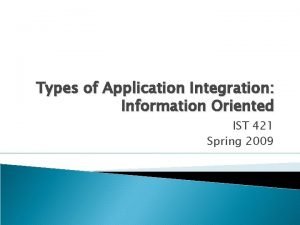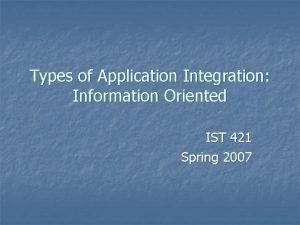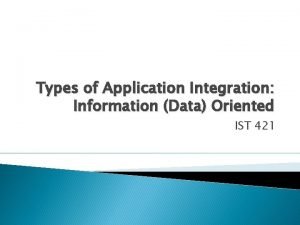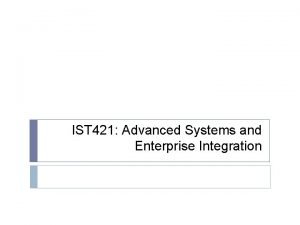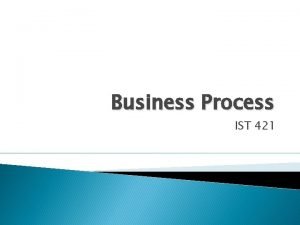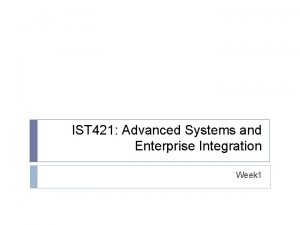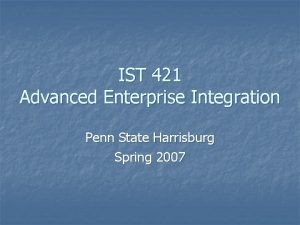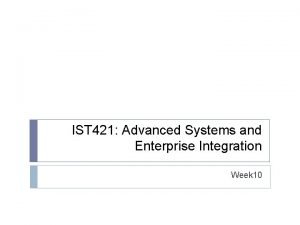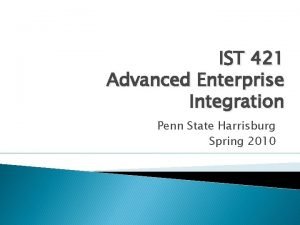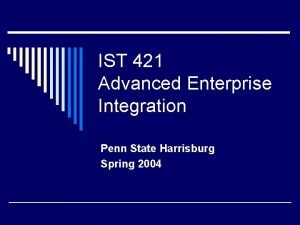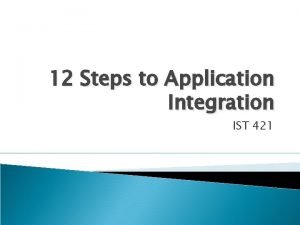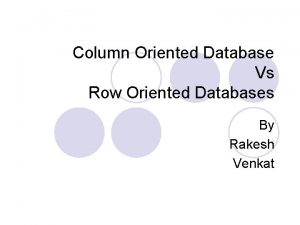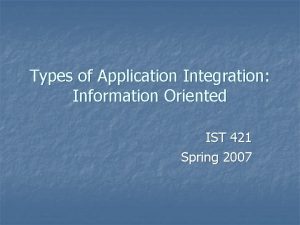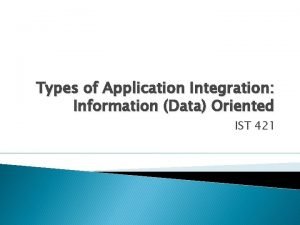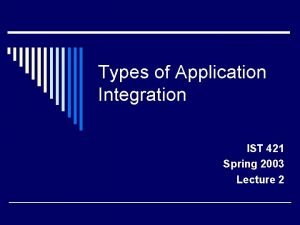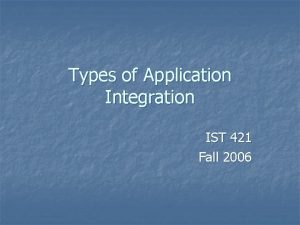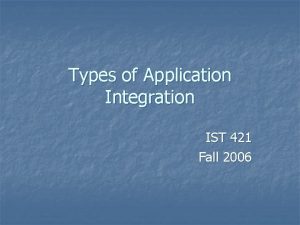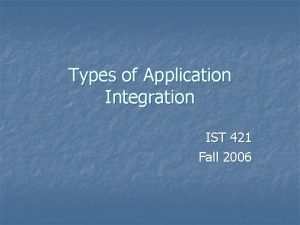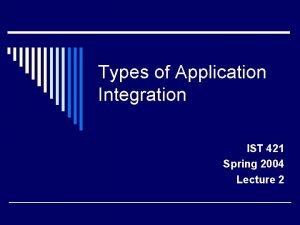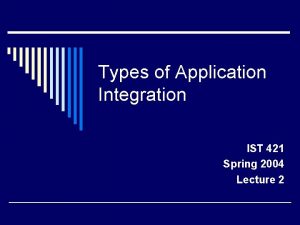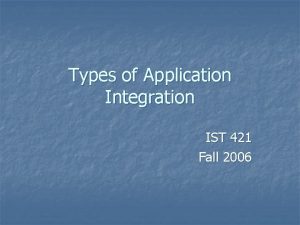Types of Application Integration Information Oriented IST 421















- Slides: 15

Types of Application Integration: Information Oriented IST 421 Spring 2009

Enterprise integration should enable organizations to become more agile and flexible. This means: ◦ Continuously monitor market demand ◦ Quickly respond by providing new products, services & information ◦ Quickly introduce new technologies ◦ Quickly modify business methods Lee, Siau, & Hong, Enterprise Integration with ERP and EAI, Communications Of the ACM, Vol. 46, Number 2, February 2003, 54 -60.

Coupling Binding an application together in such a way that they depend on each other, sharing methods, interfaces, and perhaps data Problems: ◦ Creates one application and database out of many, each dependent on the other ◦ Over time, a change to any system means a change to the coupled systems as well

Cohesion Act of “sticking” together Applications and databases are independent Changes to any source system should not affect the others

Coupling vs. Cohesion The goal is to have loosely coupled components so that there is little or no dependency Integration solutions should be cohesive rather than coupled

Integration Models There are four general categories to consider for integration: ◦ ◦ Information-oriented Business process integration-oriented Service-oriented Portal-oriented

Data-Level Integration

Information-Oriented Problem domains: ◦ Moving data between traditional mainframe, fileoriented databases and relational databases ◦ Relational databases to object databases ◦ Multi-dimensional databases to mainframe databases

Information-Oriented Source and Target systems produce and consume information Pattern follows: ◦ ◦ Database (SQL or JDBC) Application (API) User interface (Screen scraping) Embedded device (API type interface)

When to Use it Combine data from multiple sources for analysis and decision making Provide multiple applications with read access to a common source of information Allow data to be extracted from one source and reformatted and updated in another

Data-Level Integration Advantages: ◦ Tools and techniques currently exist ◦ Relatively easy and in wide use ◦ Requires no changes to the application logic or database structure ◦ Provides access to a wider range of simple data ◦ Allows data to be reused across other applications

Data-Level Integration Disadvantages: ◦ Need to rewrite business logic ◦ Need to understand application semantics between source and target systems

Information Integration solution set that works: ◦ Identify the data ◦ Catalog the data into a data dictionary Reason for the data Ownership Format Security Role in the data structure ◦ Build the enterprise metadata model Used as a master guide for integrating

Information Integration Maintain integrity issues Data latency ◦ Real time ◦ Near time ◦ One time

Information Integration
 Information-oriented application integration
Information-oriented application integration Information oriented
Information oriented Information-oriented application integration
Information-oriented application integration Ist 421
Ist 421 Processist
Processist Ist 421
Ist 421 Ist 421
Ist 421 Advanced systems integration
Advanced systems integration Ist 421
Ist 421 Ist 421
Ist 421 Steps for application integration
Steps for application integration Consumer oriented vs trade-oriented sales promotion
Consumer oriented vs trade-oriented sales promotion Row oriented vs column oriented database
Row oriented vs column oriented database Heute mittwoch guten morgen mittwoch winter
Heute mittwoch guten morgen mittwoch winter Es ist kalt es ist kalt flocken fallen nieder
Es ist kalt es ist kalt flocken fallen nieder Es ist herbst bunte blätter fliegen
Es ist herbst bunte blätter fliegen
